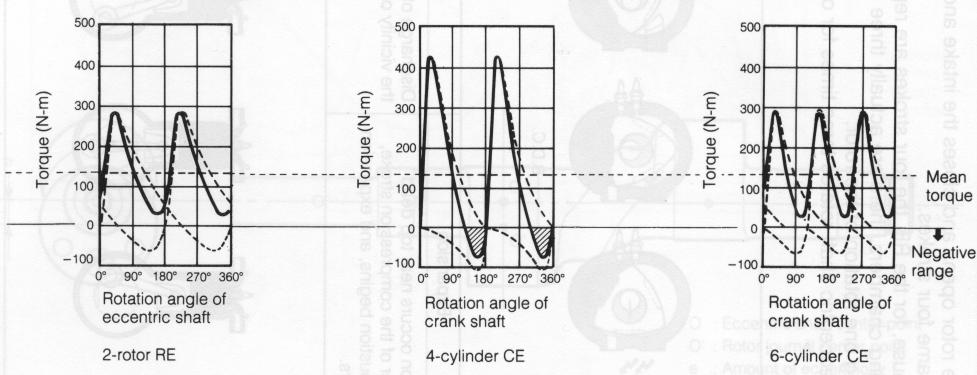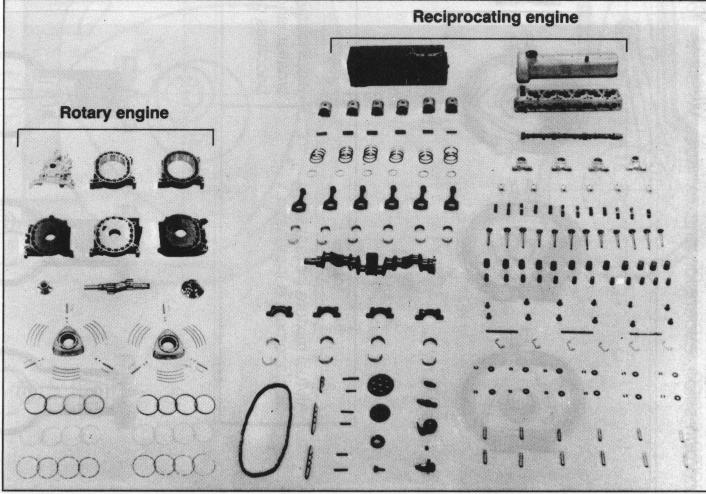FLAT TORQUE CHARACTERISTIC
As can be seen from figure 2-2, the "process time" for each stroke is completed during a 270° rotation of the output shaft, which is clearly longer than the 180° rotation angle for the four-cycle reciprocating engine.
In addition, there are no intake or exhaust valves to cause loss of working chamber sealing at high rpm as is the case with reciprocating engines.
As a result, because sufficient time for air intake is provided even at high speed, a flat torque curve can be obtained at all speeds.
As shown in figure 2-4, the output generation spacing for the two-rotor Mazda RE is one for each 180° rotation of the output shaft, which is the same as that of the four-cycle, four-cylinder reciprocating engine. However, the torque fluctuation, which never enters into the negative range and also is smaller, is similar to that of a six-cylinder reciprocating engine.
Fig. 2-4 Comparison of torque fluctuation
FEW COMPONENT PARTS
Because intake and exhaust are accomplished by rotation of the rotor only, there are no valve-related components.
Because the construction is simple and there are few reciprocal motion components, there are few components in total.
A comparison with a six-cylinder reciprocating engine is shown.
Fig. 2-5 Component parts
3

